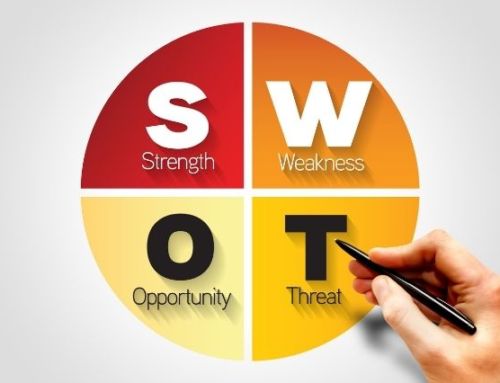The most fundamental of any marketing effort is understanding the audience you’re targeting, otherwise known as your target audience. Most small businesses have a fairly good grasp of who their target audience is. Some have taken the effort of diving deeper and describing their ideal client. To get the most out of your marketing efforts, it’s a good idea to create buyer personas so you know how to effectively craft your marketing message to different individuals. Understanding buyer personas and why you need them for marketing can help elevate your overall buying efforts.
What is a buyer persona?
A buyer persona is a generalized representation of your client that accounts for the demographics, behaviors, goals, motivators, and challenges they are facing. Buyer personas provide structure and context for your small business to better understand the needs of individual customers. By creating buyer personas, you will be able to attract the most valuable visitors, leads, and customers to your business. In other words, buyer personas help you understand your customers and prospective customers better, which makes it easier for you to tailor your content, messaging, product development, and services to meet the specific needs, behaviors, and concerns of the members of your target audience. Since different groups of people may buy your products for different reasons, you might need to create more than one buyer persona. You can’t get to know every customer or prospect individually. But you can create a customer persona to represent each segment of your customer base.
What are ideal clients?
 Ideal clients are essentially a description of your “dream” client, from age to ad spend to how much and what kind of communication happens between your company and that client. Most importantly, it describes attributes that make them the best fit for the solutions your small business provides. Sometimes call an ideal customer profile (ICP), they are focused on the fit of the account and don’t dive too deep into the individuals you will encounter, whereas a buyer persona will dive deeper, which is why you still need buyer personas in addition to defining your ideal client. You may actually have several personas under one “ideal client”. As an example, the ideal client you describe might speak more to the number of employees a company has, their budget, their location, their industry, and timeframe for a project. Underneath, you may be dealing with two personas on a single sales effort: operations, which is going to be impacted by logistics, and upper management, who are more concerned about costs and bigger picture solutions.
Ideal clients are essentially a description of your “dream” client, from age to ad spend to how much and what kind of communication happens between your company and that client. Most importantly, it describes attributes that make them the best fit for the solutions your small business provides. Sometimes call an ideal customer profile (ICP), they are focused on the fit of the account and don’t dive too deep into the individuals you will encounter, whereas a buyer persona will dive deeper, which is why you still need buyer personas in addition to defining your ideal client. You may actually have several personas under one “ideal client”. As an example, the ideal client you describe might speak more to the number of employees a company has, their budget, their location, their industry, and timeframe for a project. Underneath, you may be dealing with two personas on a single sales effort: operations, which is going to be impacted by logistics, and upper management, who are more concerned about costs and bigger picture solutions.
How do you build buyer personas?
There are a lot of tools that can help you build your buyer persona(s). HubSpot and Hootsuite both offer free templates to help guide you through the process, or you can follow these simple steps.
The best place to research buyer personas is to start with people who have already bought from your company. Get a mix of personal and professional information such as:
- What is the buyer’s age?
- Does the buyer live in an urban, suburban, or rural environment?
- How does the buyer spend his/her day?
- Who does the buyer look up to?
- What does the buyer do for fun?
- What level of education has the buyer achieved?
- What type of company does the buyer work for?
- What is the buyer’s role/title in the company?
- What are the buyer’s biggest challenges at work?
- How does the buyer define success in the workplace?
- What are the buyer’s biggest pain points?
- What are the buyer’s most common objections?
- How can your product or service help solve the buyer’s challenges?
- How tech-savvy is the buyer?
- Which social networks does the buyer participate on?
- How does the buyer prefer to communicate?
 You can see how these questions will allow you to dive deeper into what the person is all about. Once you gather all this information, start segmenting them if necessary, depending on your product or service. Which ones are decision-makers? Which ones are influencers but don’t make the final decision? If you sell a large variety of products or services, you might need to segment by job title. For others, it may make sense to simply divide them by decision-maker and influencer.
You can see how these questions will allow you to dive deeper into what the person is all about. Once you gather all this information, start segmenting them if necessary, depending on your product or service. Which ones are decision-makers? Which ones are influencers but don’t make the final decision? If you sell a large variety of products or services, you might need to segment by job title. For others, it may make sense to simply divide them by decision-maker and influencer.
Once you have this information, look for commonalities. Look for desirable traits that are better suited to how your company solves problems, communicates, or otherwise functions. Keep diving deeper and deeper until you can actually envision a person with the ideal persona best suited for you. For example, you may find that the majority of the decision-makers you work with are female, between the ages of 35 and 50, prefer email communication and work with a budget of $10,000/month. You might also determine that most of your good clients seem to use your services because it solves a very specific problem, such as a lack of incoming quality leads. You can begin to imagine an actual person that has all these traits and needs. With that information, you can craft marketing messages aimed specifically at that person. Most companies, if they’ve done any research, craft their messages based on the ideal client, but with this additional insight, your marketing message now becomes more targeted, more personal, more aligned with the needs of the actual decision-maker instead of the company as a whole.
Buyer personas help you understand your customers and, more importantly, how your product or service best suits them. More importantly, your messaging becomes more personal based on the persona, so you’ll substantially increase the likelihood of your marketing messages hitting home and resonating with the desired person. Even creating one buyer persona to start can help elevate the quality of your leads!
- Marketing Tactics That Your Small Business Can Do for Free - January 10, 2024
- How to Create Images for Your Small Business Website - December 6, 2023
- How Small Businesses Benefit from Referrals - November 6, 2023





